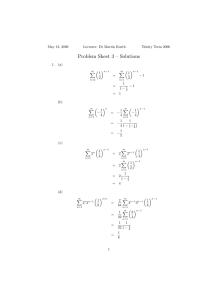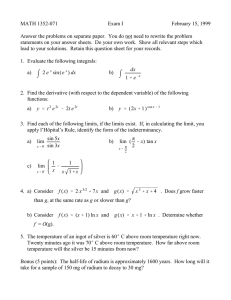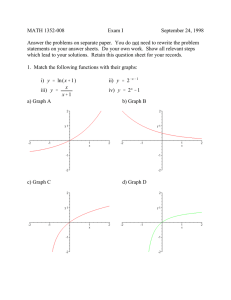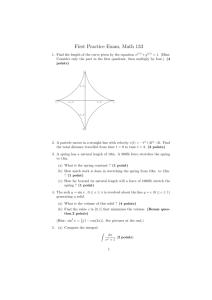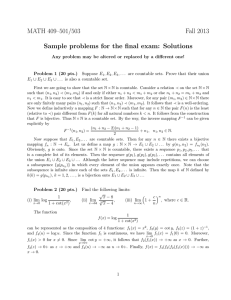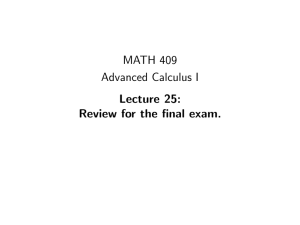Math 5319 Exam II March 26, 2001
advertisement
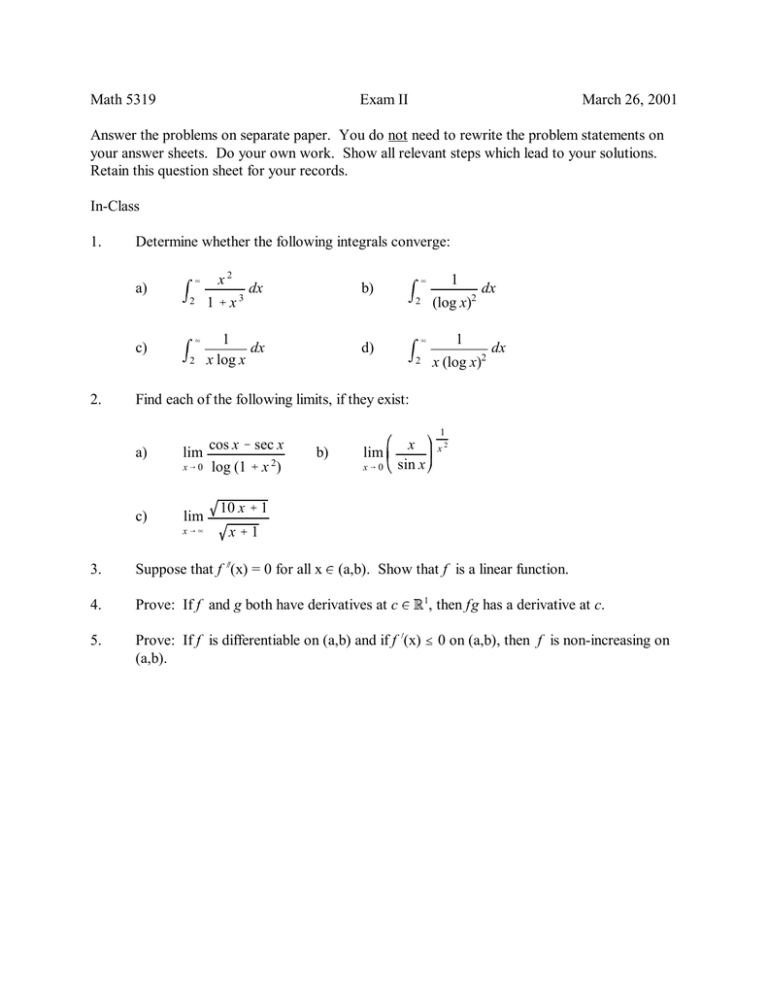
Math 5319 Exam II March 26, 2001 Answer the problems on separate paper. You do not need to rewrite the problem statements on your answer sheets. Do your own work. Show all relevant steps which lead to your solutions. Retain this question sheet for your records. In-Class 1. Determine whether the following integrals converge: a) c) 2. 4 x2 dx b) 1 dx x log x d) m2 1 % x 3 4 m2 4 1 m2 (log x)2 4 1 dx m2 x (log x)2 dx Find each of the following limits, if they exist: a) cos x & sec x lim x 6 0 log (1 % x 2) c) lim x64 1 b) x lim x 6 0 sin x x2 10 x % 1 x%1 3. Suppose that f (x) = 0 for all x 0 (a,b). Show that f is a linear function. 4. Prove: If f and g both have derivatives at c 0 ß1, then fg has a derivative at c. 5. Prove: If f is differentiable on (a,b) and if f (x) # 0 on (a,b), then f is non-increasing on (a,b). * ) Take-Home (Due Friday, 5:00 pm) Do any ten (10) of the following problems: x 1. Show that 2. Use 1. to estimate # 1 & x2 x 1&x x 1 m0 1 & x2 2 x # 1&x on [0,1). dx [Note the exact value of the integral in 2. is &2i 2(EllipticE( 2, 2 )%i 2(EllipticF( 2, 2 ) 2 2 %2i 2(EllipticE( 2 )&i 2(EllipticK( 2 ) 2 2 which isn’t nice at all.] 3. 4. Determine whether the following integral converges: Determine whether the following integral converges: 5. Determine whether the following integral converges: 6. Determine whether the following integral converges: 7. Determine whether the following statement is true or false: f 8. 0 [a,b] 5 Yf2 0 cos x 1 m0 cos x 1 m0 4 m0 1 m0 dx sin 3 x 3 dx 2 sin x dx x (1 % x ) dx x (1 & x ) [a,b] 5 Determine whether the following statement is true or false: f where 0 [a,b] ,5 Yf2 0 [a,b] ,5 [a,b] denotes the set of functions which are improperly integrable on [a,b]. ,5 ' 0 , without using l’Hopital’s Rule. 9. Prove that lim x log x 10. Give an example of a function f x 6 0% F(x) ' m0 x 0 [0,1] such that f (x) $ 0 on [0,1] and 5 f (t) dt is not strictly increasing on [0,1]. 11. Using some form of the remainder Rn+1(x) , find the Taylor’s formula representation for f (x) = sinh x. 12. Use 11. to show that the Taylor’s series for f (x) = sinh x converges to f . 13. Determine whether the following proposition is true or false: Let i) f , g be differentiable on (0, ] with g(x) ú0, g (x) ú 0 on (0, ] ) ii) lim f (x) x 6 0% iii) lim x 6 0% ' 0 ' lim g(x) x 6 0% f (x) g(x) 'L Then, lim x 6 0% f )(x) g )(x) 'L
